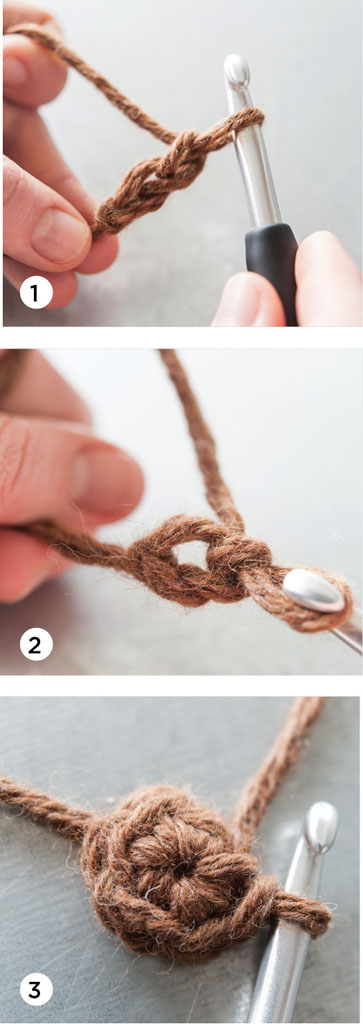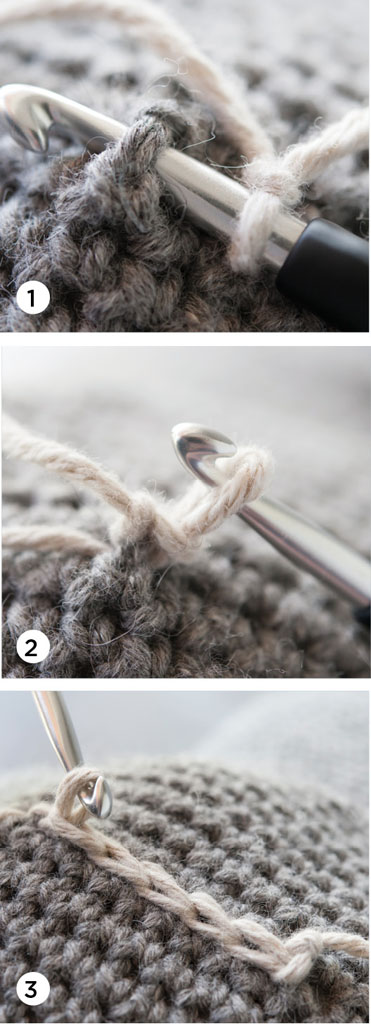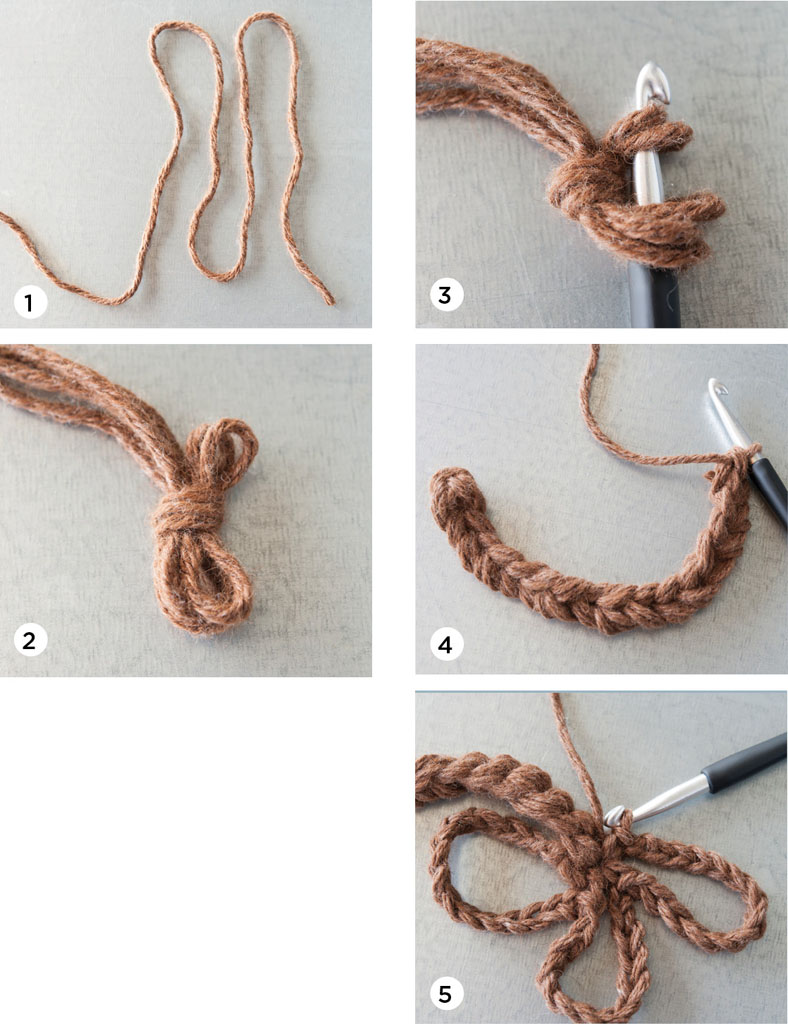

1. Make a loop in the yarn.
2. Pull the yarn through the loop.
3. Place your hook through the loop and tighten.

1. Make a slip knot.
2. Wrap yarn over the hook (yarn over) and pull through the loop close around the hook but not too tight.
3. Repeat until desired length.

1. Insert the hook into the stitch closest to the slip knot.
2. Yarn over hook.
3. Pull the yarn through the stitch and loop in one motion.

1. Make a slip knot and chain two stitches.
2. Insert the hook into the first chain stitch and work a double crochet stitch six times into this same stitch.
3. Pull tightly on the tail of the yarn to close the centre of the circle.

1. Insert the hook through the stitch (both loops).
2. Yarn over and pull through the stitch.
3. Yarn over again and pull through both loops to end with one stitch.
NB: US crocheters will know this stitch as single crochet (sc).

1. Insert the hook through the front loop of the stitch only (two loops on the hook).
2. Insert the hook through the front loop of the next stitch (three loops on the hook).
3. Yarn over hook and pull through first two loops on the hook, then yarn over and through both remaining loops to complete the double crochet.
NB: Some of the pattern instructions require a dc3tog or dc4tog. Work these decreases using the same method but through the stated number of stitches together.

1. Wrap the yarn from front to back over the thumb of your non-hook hand.
2. Insert the hook into the stitch and yarn over with the yarn behind your thumb.
3. Pull through leaving a loop on the WS and complete the double crochet stitch with a yarn over and pull through the two loops back to one.
4. Work frequency as directed in pattern.

1. Insert the hook through the next stitch, yarn over and pull through the stitch.
2. Yarn over with the new colour and complete the double crochet stitch with this new yarn.
3. Continue with this new colour, leaving the original colour to the back of the work. Cut if a one-off colour change or run on the WS of the fabric if colour changing back to it.

1. Make a slip knot and insert the hook into the fabric around a stitch.
2. Yarn over and pull through the fabric and loop in one motion.
3. Continue moving across the fabric like this to reach the desired location.

When making complex colour changes that require you to run the yarn behind the fabric on the inside of the animals, make sure you don’t pull the threads too tight when changing the colour as this will pucker the fabric.
Many of the body details are added once the main work of crocheting and assembling the toy has been done.
The most common type of tail is based on a big chain made by holding four strands of the yarn together. The tails are finished by working the number of chain loops stated in the pattern to the bottom of that big chain, which you can do with your regular hook. Lots of the animals are then completed with loops of chain stitches to represent long hair such as fleece, manes and topknots. This is worked as part of the final finishing process and should not be confused with the fur stitch, which is worked into the crocheting of the actual body part.

1. Fold the yarn to create a piece approximately 20cm (8in) long that is four strands thick.
2. Tie a slip knot into these four strands at one end.
3. Insert hook through both loops either side of slip knot.
4. Loosely chain the number of thick stitches stated in the pattern.
5. Into the final stitch work further chains using a single strand of yarn creating loops as stated in the pattern.

1. Make a slip knot and insert the hook through the fabric at the desired position of the first loop.
2. Dc through the fabric to secure and then * chain the number of stitches stated in the pattern. Attach the chain back to the fabric with a dc approximately every other stitch and row space away from the last one.
3. Repeat from *.